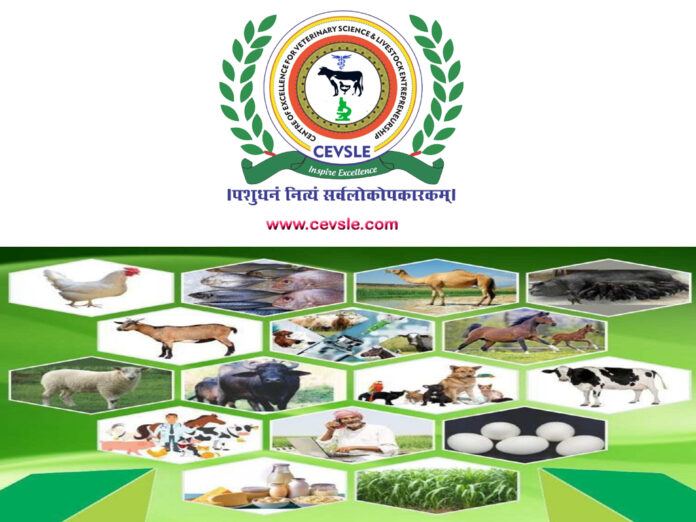Recent Advancements in the Diagnosis and Management of Livestock and Poultry Diseases
Dr. Sachin Uttamrao Raut, Department of Veterinary Surgery & Radiology, College of Veterinary & Animal Sciences, Parbani
Email id:- drsuraut@gmail.com
Cell No.7588571511
The agriculture sector is essential to the world economy because it feeds billions of people and supports their lives. This industry’s essential components—livestock and poultry farming—contribute substantially to the global food supply. Nonetheless, infections that can affect animal health, welfare, and productivity remain one of the industry’s ongoing problems. New developments in the identification and treatment of diseases in cattle and poultry are revolutionizing the field of veterinary medicine by providing creative ways to reduce the effects of infectious agents and raise agricultural output as a whole.
Diagnosis:
- Molecular diagnosis:-
The broad use of molecular diagnostic methods in recent years has been one of the major innovations. Because it is now possible to precisely identify pathogens at the molecular level, polymerase chain reaction (PCR) and other nucleic acid amplification techniques have revolutionized the detection of disease. High sensitivity and specificity are provided by these methods, allowing for quick and precise diagnosis even in the early stages of infection. Determining the cause of an illness makes it easier to implement customized treatment plans, which lessens the need for broad-spectrum drugs.
- Next-Generation Sequencing (NGS) :-
Technologies utilizing Next-Generation Sequencing (NGS) have enhanced diagnostic capacities even more. Researchers can learn more about virulence factors, mechanisms of antibiotic resistance, and the genetic variety of infectious agents by deciphering the complete genetic makeup of pathogens. This information is essential for creating vaccinations that are more successful and creating therapies that are suited to the unique traits of the infections.
- point-of-care testing:-
In the field, point-of-care testing has shown to be revolutionary. With the use of portable diagnostic instruments, farmers and veterinarians can immediately evaluate the health of cattle and poultry on the spot. By facilitating prompt decision-making, this instant feedback loop stops infections from spreading within and between farms.
Management:-
- vaccination strategy:-
Disease control has benefited greatly from vaccination strategy advancements. Scientists are working on vaccines that will be more effective in the fight against both current and potential threats to poultry and cattle. A wider range of durable protection against infectious pathogens is possible with novel vaccine delivery technologies including DNA and vector vaccines.
- Data analytics and Bio security:-
The integration of sensor technologies and data analytics in precision livestock farming is revolutionizing the approach to herd management for farmers. Real-time monitoring of animal health parameters minimizes the impact on productivity by enabling early disease detection and prompt intervention. By giving farmers the tools to implement focused preventive measures, this data-driven approach improves bio security measures.
- Artificial Intelligence:-
It is impossible to overestimate the importance of machine learning and artificial intelligence (AI) in the management of disease. By analyzing large datasets, these technologies are able to predict disease outbreaks and identify patterns. Artificial Intelligence (AI) in veterinary medicine improves our knowledge of disease dynamics and helps us take preventative action to protect animal health.
- Antimicrobial stewardship:-
With worries over antibiotic resistance growing, antimicrobial stewardship has taken centre stage. To lessen dependency on conventional antibiotics, researchers are looking into pro-biotics, alternative therapies, and creative treatment modalities. By taking a comprehensive approach, antimicrobials are used responsibly, maintaining their effectiveness and protecting the health of both humans and animals.
- Global Surveillance Networks:-
International cooperation and the creation of global surveillance networks are helpful in tracking the spread of illnesses and putting coordinated responses into action.
A paradigm shift in veterinary medicine has been brought about by recent developments in the diagnosis and treatment of diseases in livestock and poultry. Artificial intelligence, precision farming, molecular diagnostics, and other innovations enable farmers and veterinarians to combat illnesses more skillfully, protecting animal health and welfare and promoting a resilient and sustainable agriculture sector. Future developments in technology could lead to even more advanced and focused approaches to addressing the problems that the livestock and poultry farming industry faces.



